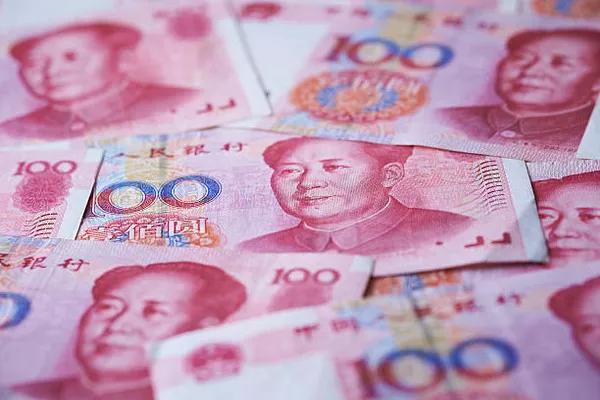In the complex world of international finance, currency valuation plays a pivotal role in shaping global economic dynamics. Among the myriad of currencies traded on the forex market, the Chinese Yuan (CNY) holds significant importance, given China’s status as a major economic powerhouse. One of the burning questions that often arises in discussions about the CNY is, “What is it pegged to?” In this article, we embark on a journey to unravel the mysteries behind the CNY’s peg, exploring its historical context, influencing factors, and implications for the global economy.
History of the CNY Exchange Rate System:
To understand the present, we must delve into the past. China’s exchange rate system has undergone significant transformations over the years, reflecting the country’s evolving economic landscape and integration into the global economy. From a tightly controlled fixed exchange rate regime to a more flexible managed floating system, the journey of the CNY has been marked by milestones that shaped its current valuation mechanism.
Factors Influencing the CNY Peg:
The valuation of the CNY is subject to a multitude of factors, both domestic and international. At the heart of its peg lies the intricate interplay between government intervention, monetary policy decisions, and market forces. China’s economic performance, trade dynamics, and geopolitical considerations all exert influence on the currency’s valuation, making it a complex puzzle for analysts to decipher.
Relationship with the U.S. Dollar (USD):
Perhaps one of the most scrutinized aspects of the CNY’s peg is its relationship with the U.S. Dollar (USD). Historically, China maintained a fixed exchange rate regime, pegging the CNY to the USD. However, in recent years, the country has adopted a more flexible approach, allowing the CNY to fluctuate within a managed band against a basket of currencies. This shift reflects China’s aspirations for greater autonomy in its monetary policy and a desire to reduce reliance on the USD-dominated international financial system.
Role of the People’s Bank of China (PBOC):
Central to the management of the CNY’s peg is the People’s Bank of China (PBOC), the country’s central bank. Armed with a toolkit of policy instruments, the PBOC intervenes in the foreign exchange market to stabilize the currency and ensure orderly market conditions. Through a combination of market operations, reserve management, and communication strategies, the PBOC strives to maintain the CNY’s peg within targeted parameters, while also safeguarding against speculative attacks and excessive volatility.
Comparison with Other Pegged Currencies:
China is not alone in its endeavor to peg its currency to a specific value. Many other countries around the world adopt similar strategies to maintain stability and promote economic growth. However, the specific mechanisms and policy frameworks vary widely, reflecting each country’s unique economic circumstances and policy priorities. By comparing China’s exchange rate regime with those of other pegged currencies, we gain valuable insights into the strengths and weaknesses of different approaches.
Impact on Global Economy and Financial Markets:
The valuation of the CNY has far-reaching implications for the global economy and financial markets. Changes in the CNY’s peg can influence trade flows, investment patterns, and asset prices across borders. Moreover, the perceived stability or volatility of the CNY can have ripple effects on investor sentiment, market sentiment, and risk appetite. As such, policymakers and market participants closely monitor developments related to the CNY, recognizing its significance in the broader context of international finance.
Challenges and Risks of Currency Pegging:
While currency pegging offers certain advantages, it is not without its challenges and risks. Maintaining a fixed exchange rate requires vigilant oversight and timely policy adjustments to counteract external shocks and internal imbalances. Inflationary pressures, speculative attacks, and balance of payments issues are among the potential pitfalls that policymakers must navigate when pegging a currency. Understanding these challenges is crucial for devising effective risk management strategies and ensuring the long-term stability of the currency.
Future Outlook and Policy Considerations:
Looking ahead, the future of the CNY’s peg remains subject to various uncertainties and contingencies. As China continues to assert its influence on the global stage and navigate the complexities of a rapidly changing economic landscape, policymakers face critical decisions regarding the country’s exchange rate policy. Reforms aimed at enhancing the flexibility and resilience of the CNY’s peg may be on the horizon, along with efforts to deepen international cooperation and promote financial stability. By staying attuned to these developments, investors and policymakers can better position themselves to navigate the evolving landscape of international finance.
Conclusion:
In conclusion, the question of what the CNY is pegged to offers a fascinating glimpse into the inner workings of the global financial system. From its historical roots to its future prospects, the CNY’s peg embodies the complexities and intricacies of currency valuation in an interconnected world. By understanding the factors influencing the CNY’s peg and its broader implications, we gain valuable insights into the dynamics shaping the global economy and financial markets. As we continue to unravel the mysteries behind the CNY’s peg, one thing remains clear: its significance transcends borders and resonates far beyond the shores of China.


